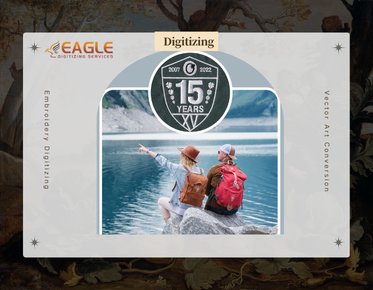How to Convert a PNG to a Vector in Illustrator
Converting a PNG file to a vector format in Adobe Illustrator is a crucial skill for designers and artists who need to scale images without losing quality. This process involves transforming raster images, which are pixel-based, into vector graphics, which are composed of paths defined by mathematical expressions. This guide will walk you through the steps of converting a PNG to a vector using Illustrator, ensuring your designs remain crisp and clear at any size. For those looking for professional assistance, services like vector art services can be invaluable.
Understanding the Basics: Raster vs. Vector
Before diving into the conversion process, it's essential to understand the difference between raster and vector images. Raster images, like PNGs, are made up of pixels, which can become blurry when scaled up. In contrast, vector images use mathematical equations to define shapes, allowing them to be resized infinitely without losing quality. This makes vectors ideal for logos, illustrations, and any design work that requires scalability.
Step 1: Open Your PNG in Illustrator
To begin the conversion process, open Adobe Illustrator and import your PNG file. You can do this by selecting "File" > "Open" and navigating to your PNG file. Once opened, your image will appear on the artboard, ready for conversion.
Step 2: Use the Image Trace Tool
Illustrator's Image Trace tool is a powerful feature that converts raster images into vector paths. To access this tool, select your image, then go to the "Window" menu and choose "Image Trace." A panel will appear with various options to customize your trace settings.
Step 3: Adjust the Image Trace Settings
The Image Trace panel offers several presets and options to refine your vector conversion. Depending on your image's complexity, you may need to experiment with different settings. Common adjustments include:
- Mode: Choose between "Black and White," "Grayscale," or "Color" based on your image's color scheme.
- Threshold: Adjusts the contrast of the trace. A higher threshold will include more detail, while a lower threshold will simplify the image.
- Paths: Controls the accuracy of the traced paths. More paths result in a more detailed vector.
- Corners: Determines the sharpness of corners in the vector paths.
- Noise: Reduces small artifacts in the image by ignoring areas of specified pixel size.
Once satisfied with your settings, click "Trace" to convert your image into a vector.
Step 4: Expand the Traced Image
After tracing, you need to expand the image to finalize the vector paths. With the traced image selected, click "Object" > "Expand" from the top menu. This action converts the traced paths into editable vector shapes.
Step 5: Clean Up Your Vector
Now that your image is a vector, you may need to clean up any unwanted paths or shapes. Use the Direct Selection Tool (A) to select and delete unnecessary elements. This step ensures your vector is as clean and efficient as possible.
Saving and Exporting Your Vector
Once your vector is ready, you can save it in various formats. To preserve the vector paths, save your file as an AI (Adobe Illustrator) or SVG (Scalable Vector Graphics) file. If you need to share your vector with others who may not have Illustrator, exporting as a PDF is also a viable option.
Additional Tips for Vector Conversion
Converting a PNG to a vector can sometimes be challenging, especially with complex images. Here are a few additional tips to help you achieve the best results:
- Simplify Your Image: Before tracing, consider simplifying your image by reducing colors or removing unnecessary details.
- Use High-Resolution Images: Higher resolution images generally produce better vector results.
- Experiment with Different Settings: Don't be afraid to try different Image Trace settings to see what works best for your image.
Exploring Professional Vector Conversion Services
While Illustrator provides powerful tools for vector conversion, sometimes professional help is needed, especially for intricate designs. Vector conversion services offer expert assistance, ensuring your images are converted with precision and quality. These services are particularly useful for businesses needing consistent and high-quality vector graphics for branding and marketing materials.
As technology advances, the demand for scalable and versatile graphics continues to grow. Understanding how to convert PNGs to vectors is a valuable skill for any designer. However, when the task becomes too complex, Eagle Digitizing excels in delivering professional vector services, transforming creative visions into scalable designs. Whether you're a seasoned designer or a business owner, leveraging these services can significantly enhance your design projects.



